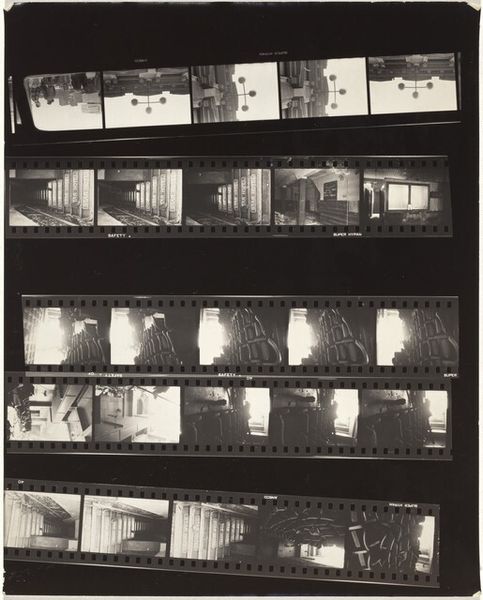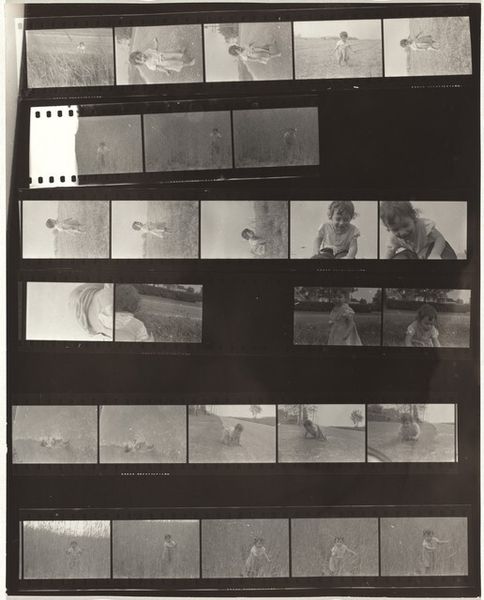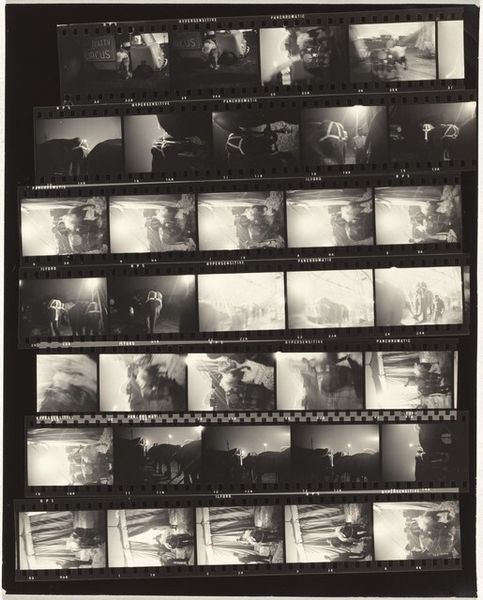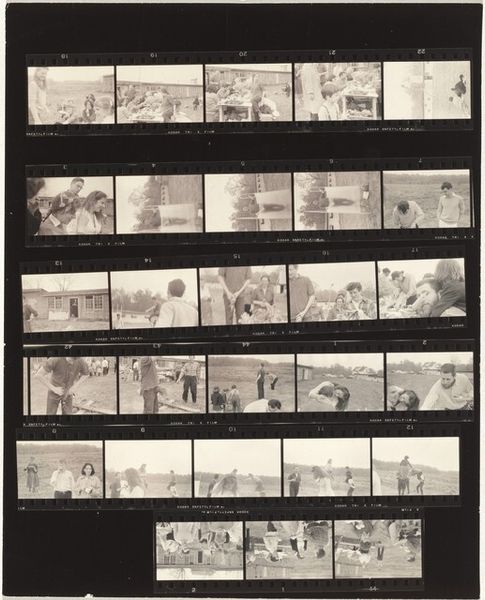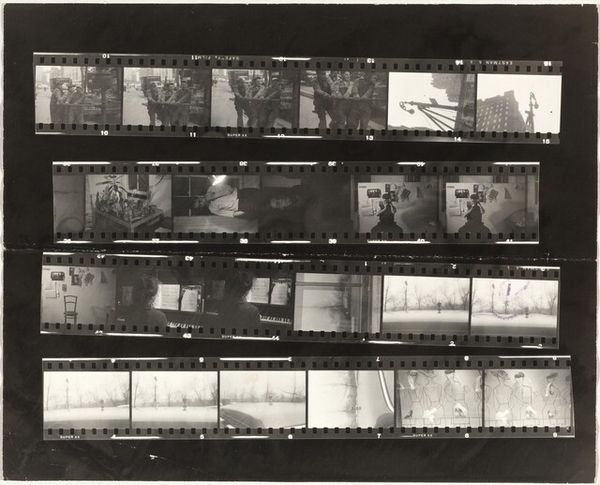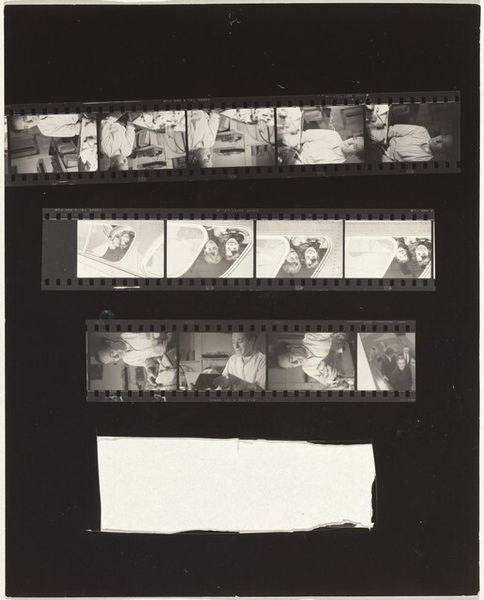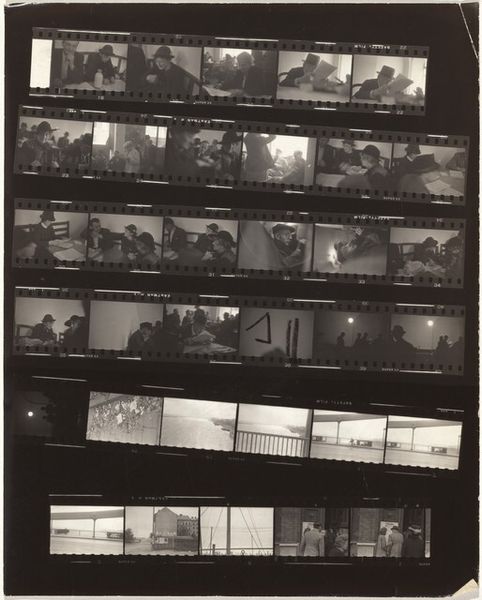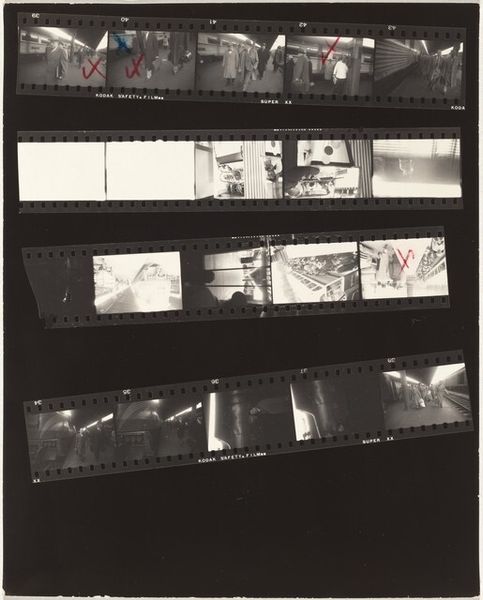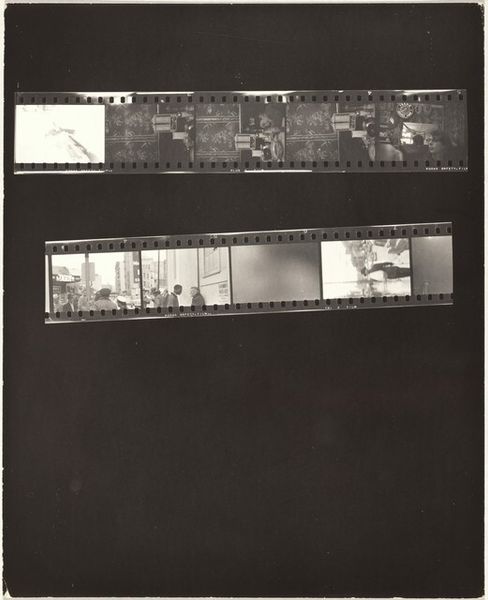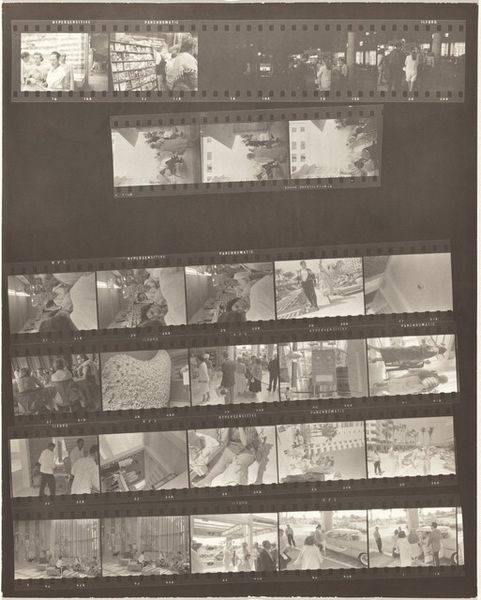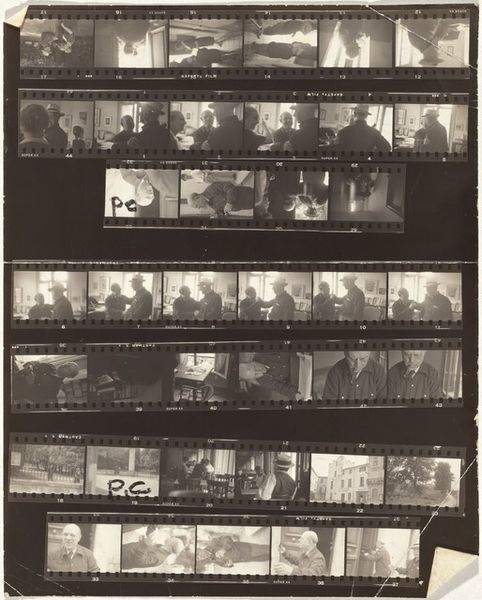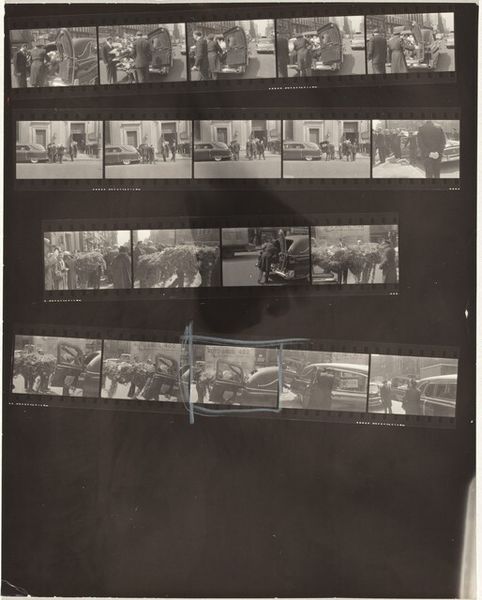
Dimensions: sheet: 25.2 x 20.1 cm (9 15/16 x 7 15/16 in.)
Copyright: National Gallery of Art: CC0 1.0
Curator: This is Robert Frank’s “Walter Gutmann and Lolita no number,” a gelatin silver print from 1962. My initial impression is of something fragmented, a series of glances or incomplete narratives. Editor: Fragmentation is key here. We see contact sheets, evidence of Frank’s photographic process laid bare. This wasn't about the perfectly posed image; it was about something more raw, more revealing. Consider what it means to share contact sheets... to look behind the final cut and at all the possible versions of it, where one could imagine an infinite number of slightly shifted realities. Curator: Absolutely. Frank often explored themes of alienation and cultural displacement. He layers it so literally here. This feels almost voyeuristic, an intimate glimpse into private moments but mediated by the artist's selection. Do you sense any emotional charge from its themes of childhood? Editor: Without a doubt. It brings forth all the taboos, and does so without even offering enough explicit narrative details. By offering so little Frank alludes to it all, especially with his inclusion of Lolita, as in, after Nabokov's book and the cultural hysteria it produced. Gutman was a notorious figure too and that clearly lends even more weight to the composition. It provokes so much of the political imagery around sex and morality, especially since this comes from a deeply countercultural creator like Frank, who was critical of the norms around him. Curator: I see Gutmann, Lolita, the family snapshot… they function as archetypes more than specific portraits. They become vehicles for broader cultural anxieties, even cautionary figures for the gaze itself. The darkroom markings become as important as the figures themselves, the emulsion alludes to decay. He captured a collective moment as the US became increasingly skeptical about images and representation. Editor: Indeed. In his process we see both the deconstruction and the elevation of the snapshot. He shows the history of photography as part of the artistic intervention itself, which certainly puts him in alignment with a host of movements and artists since then, where a critical eye has become so central to understanding cultural symbols. Curator: So, by showing these sheets, Frank doesn't present a fixed image of history but suggests its mutability. History itself is being developed. It's not just about capturing reality but showing how reality is constructed and perceived. Editor: I agree entirely. Frank invites us to question the very nature of the image and its role in shaping our understanding of society. That's where the real lasting power of this piece lies.
Comments
No comments
Be the first to comment and join the conversation on the ultimate creative platform.
